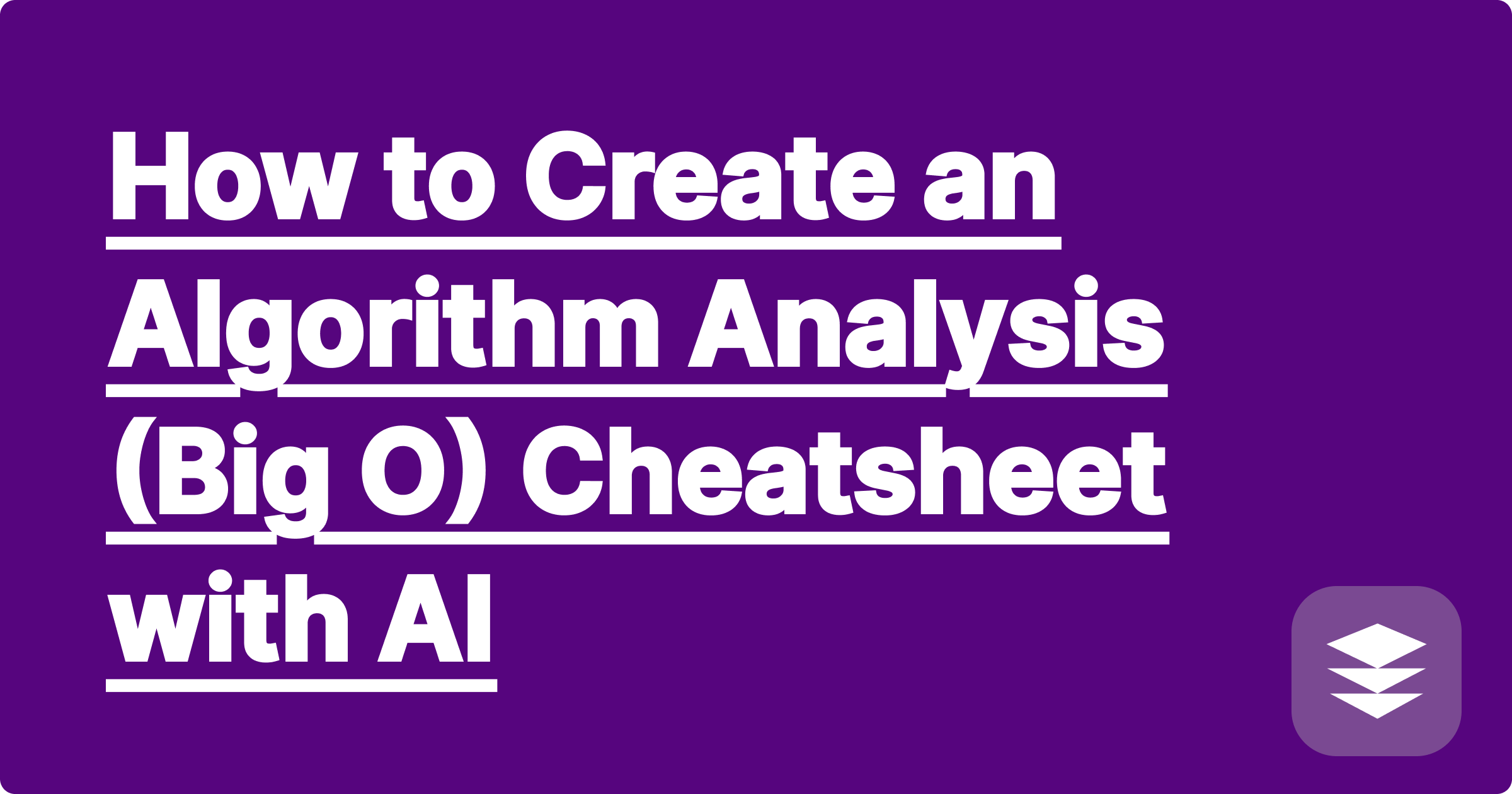
In computer science, a working solution is only the beginning. The real measure of a good algorithm is its efficiency. How does its runtime scale as the input size grows? This is the central question of algorithm analysis, and the answer is expressed in the powerful, and often confusing, language of Big O notation. Memorizing the time and space complexities for dozens of algorithms—from sorting and searching to graph traversal—is a major challenge.
A comprehensive algorithm analysis cheatsheet is one of the most valuable resources a computer science student can have. It's your quick-reference guide during exams and a lifesaver when you need to choose the right data structure for a project. But building one manually is tedious. You need to gather pseudocode, find the correct Big O complexities, and organize it all logically.
This is where GPAI Cheatsheet becomes your ultimate organizational tool. It acts as an intelligent note taker, scanning all your course materials to build the perfect reference sheet.
The Workflow:
[Image: A screenshot from GPAI Cheatsheet showing a clean table comparing different sorting algorithms, with columns for Time Complexity (Best, Average, Worst) and Space Complexity. Alt-text: An AI-generated algorithm analysis cheatsheet comparing Big O complexities.]
This document is more than a reference; it's a study tool.
The knowledge you consolidate into this cheatsheet isn't just for one exam. It's foundational knowledge for your entire career as a software engineer. Having a well-organized, personal reference on algorithm complexity is an invaluable asset.
A: Yes. You can specifically prompt it: "For each sorting algorithm, include a simple pseudocode implementation." The AI will add a code block to each section, making your cheatsheet even more practical.
A: You can use the same process. Prompt the AI to create a cheatsheet for data structures, comparing their time complexities for common operations (insertion, deletion, search) for Arrays, Linked Lists, Hash Tables, and Trees.
Algorithm analysis is the art of understanding efficiency. By using AI to create a master cheatsheet, you can organize this complex information into a clear, scannable, and powerful resource that will help you ace your exams and excel in your technical interviews.
[Build your ultimate algorithm analysis cheatsheet today. Try GPAI Cheatsheet and turn your notes into a powerful reference. Sign up for 100 free credits.]
A Step-by-Step Guide to Your First MATLAB/Simulink Project with AI
How to Design and Analyze a Simple RLC Circuit with an AI Assistant
The Ultimate Cheatsheet for Your Thermodynamics Final Exam
From Free-Body Diagram to Solution: Solving Statics Problems with AI
How to Ace Your Signals and Systems Class with an AI Fourier Analyzer
Your Personal Assistant for Fluid Mechanics Homework
How to Create an Algorithm Analysis (Big O) Cheatsheet with AI
A Guide to Writing and Verifying Mathematical Proofs with AI
How to Build a Complete Study Guide for Your Operating Systems Course
Using an AI to Solve and Explain Probability Distribution Problems